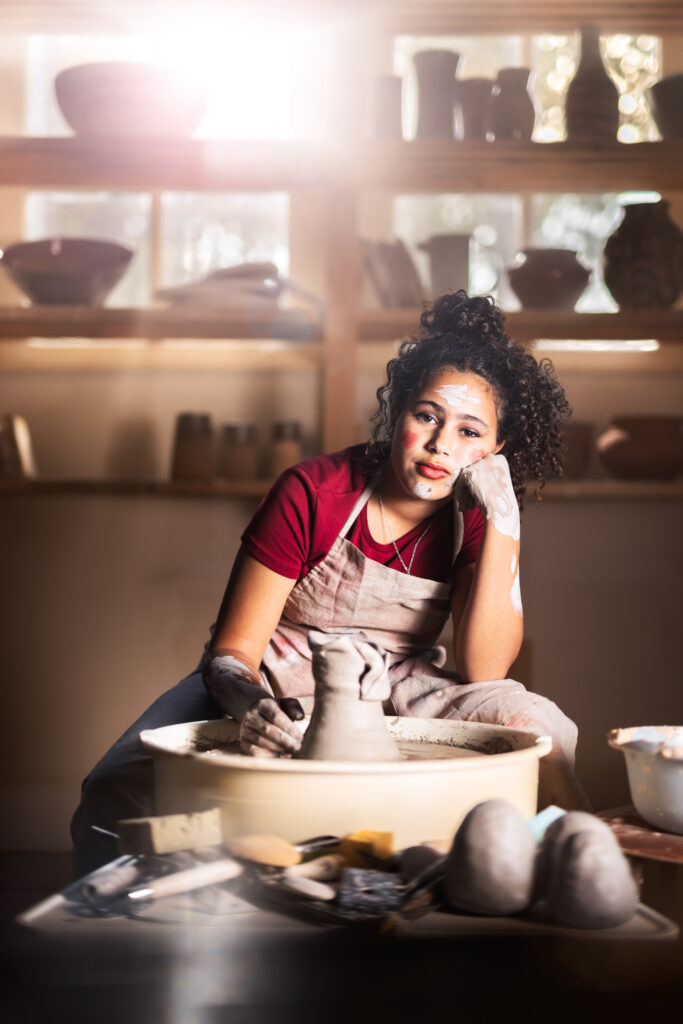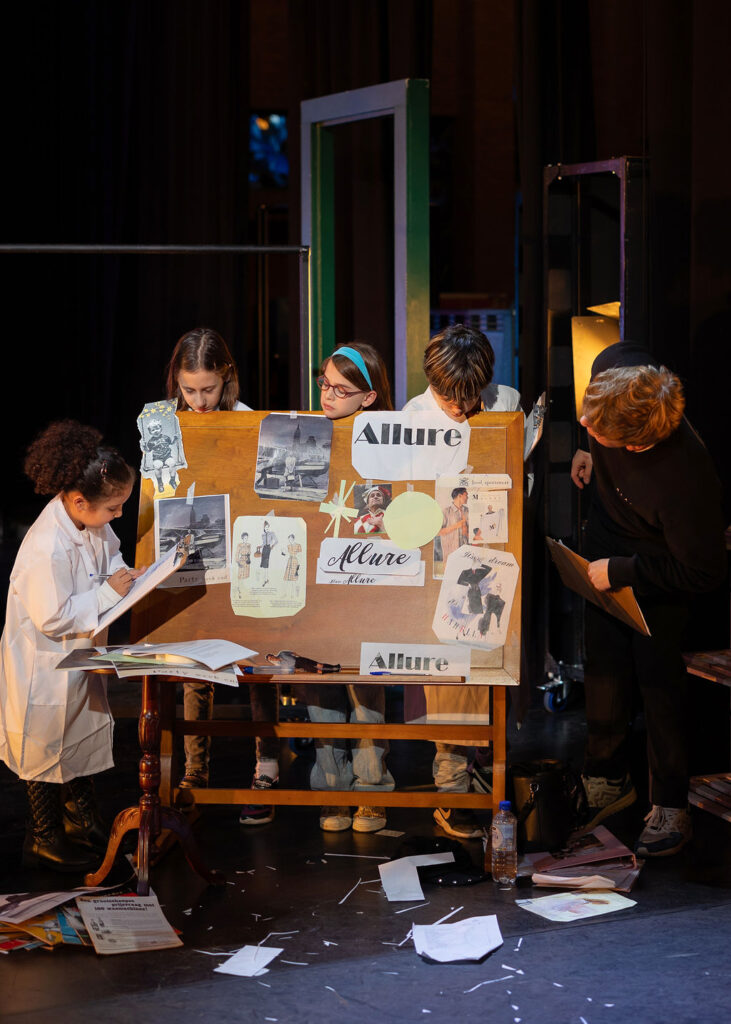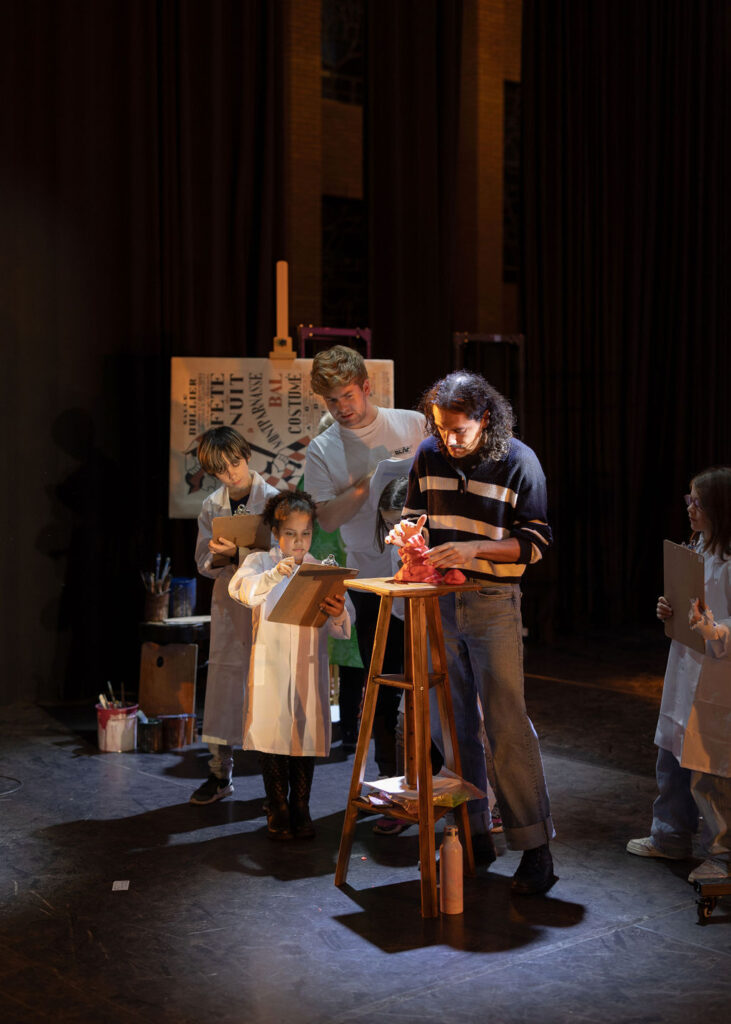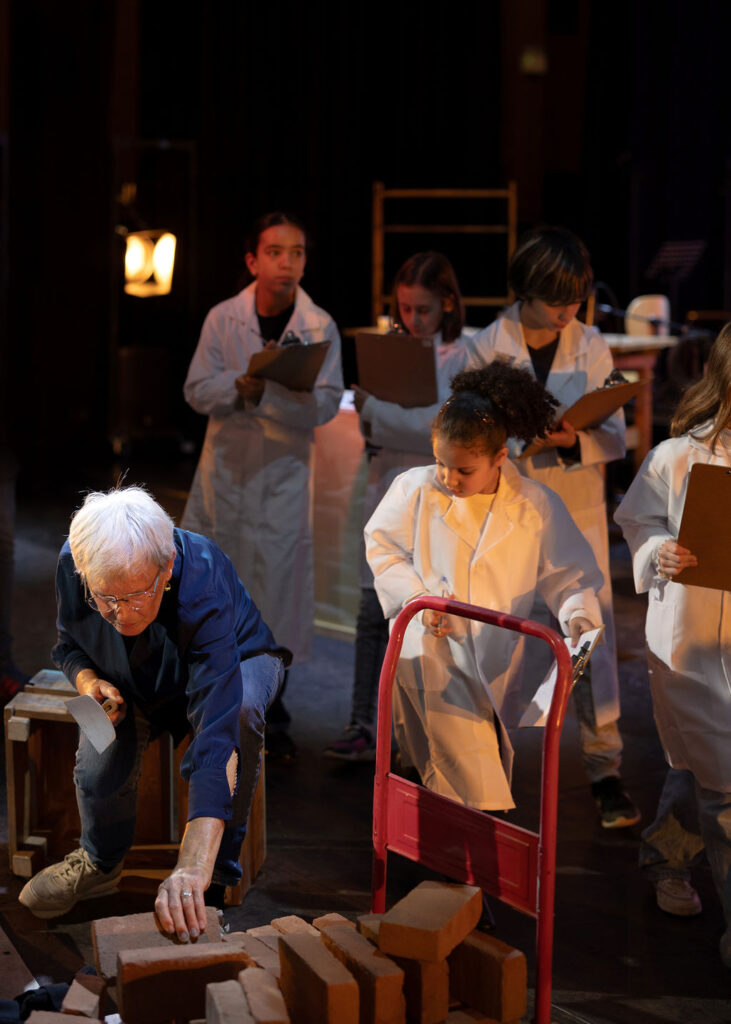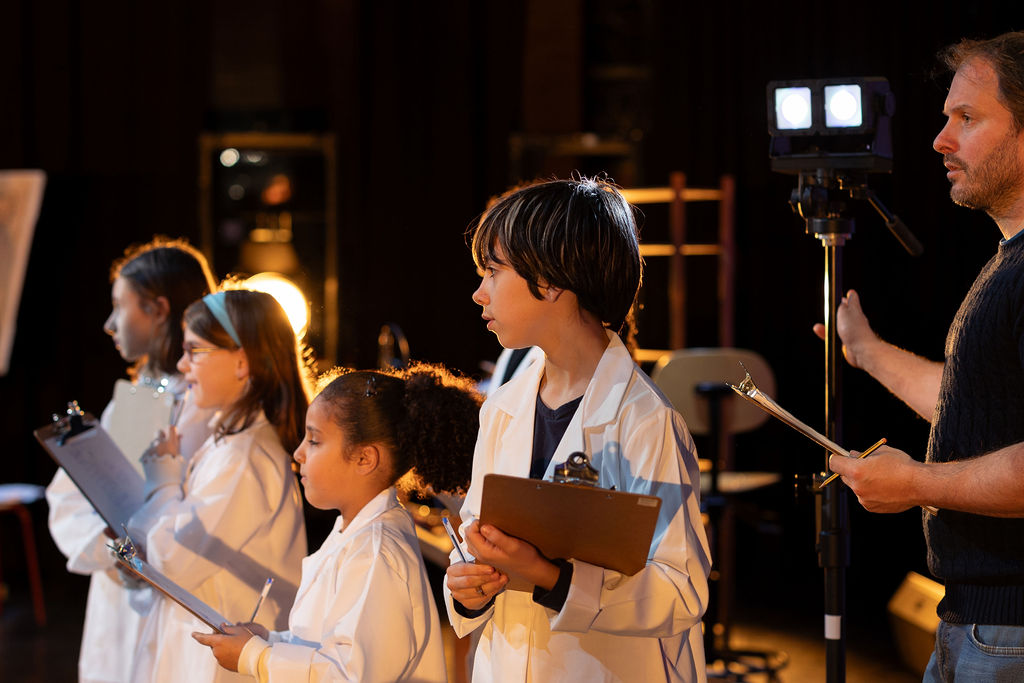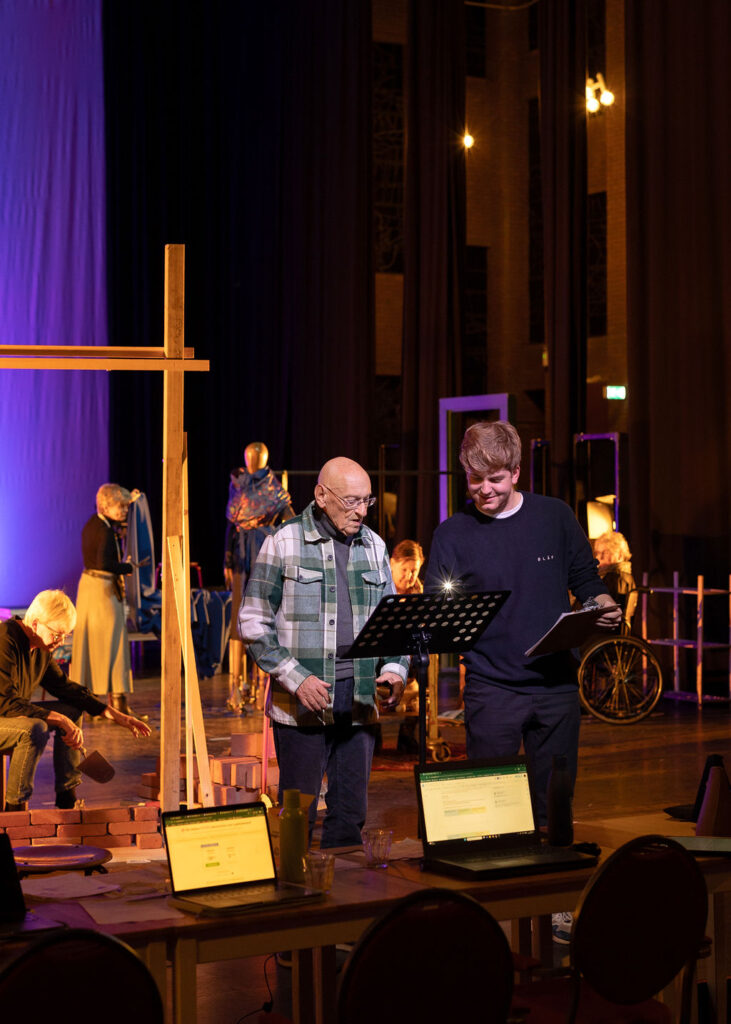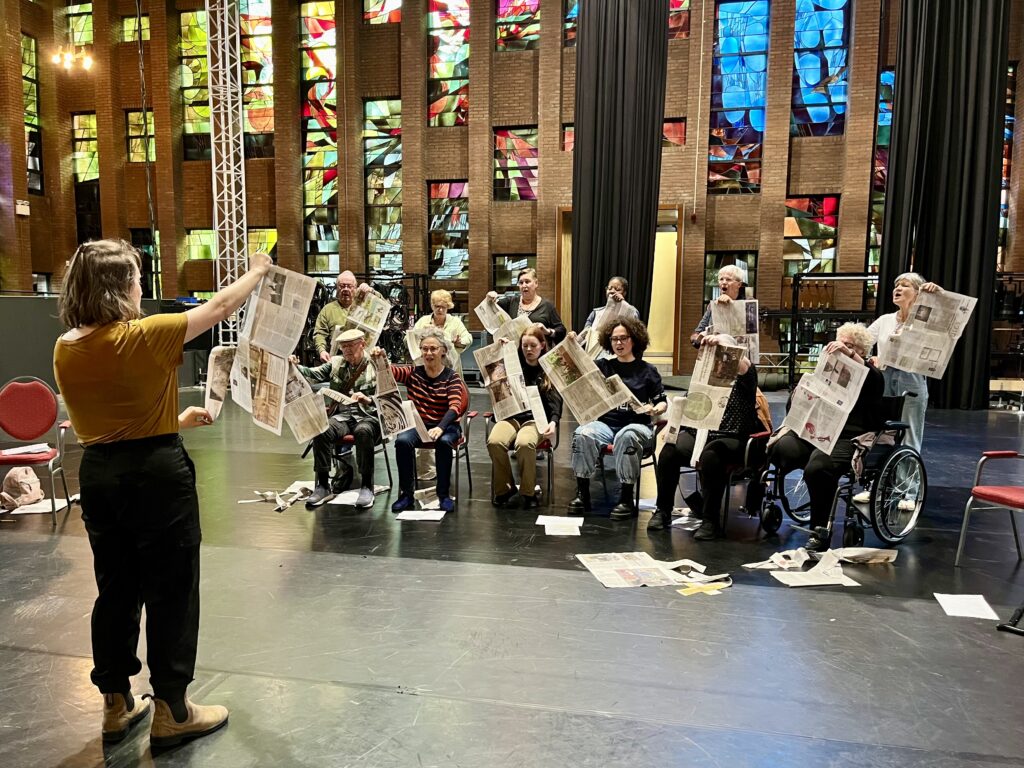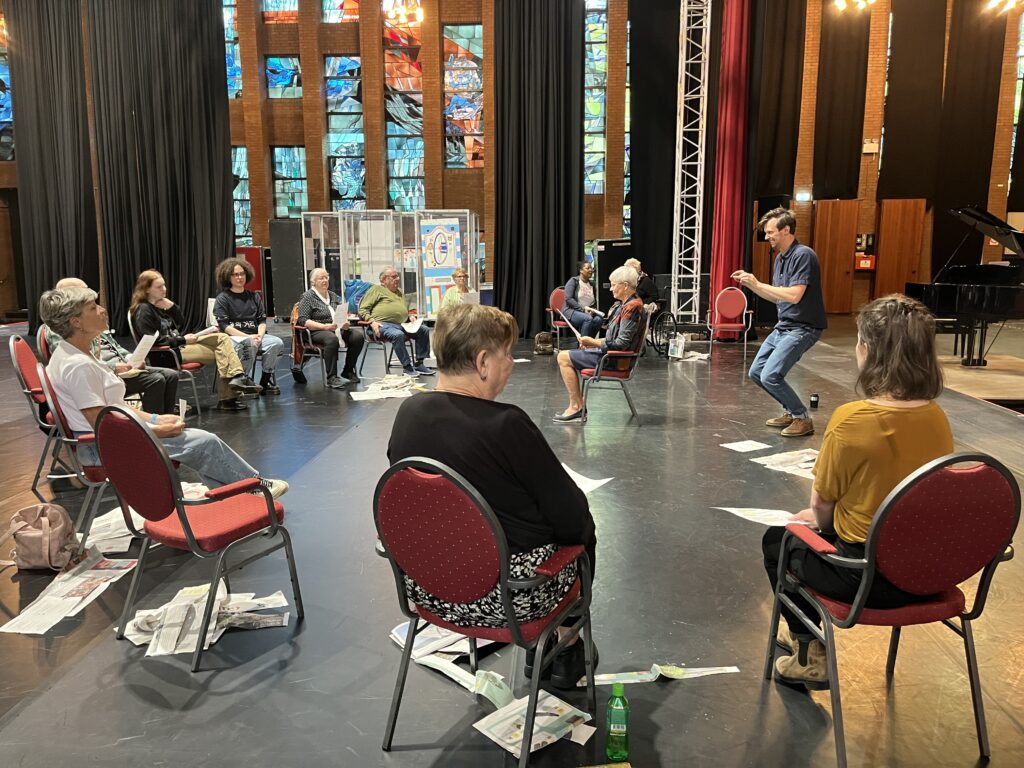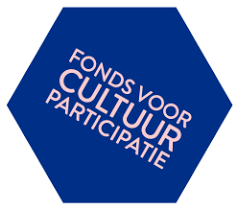Info
‘We create, with our own bare hands. We create, mangle, break, try and fix, our hearts.’
For five years now, local residents have been bringing their stories and experiences to Opera Zuid’s stage in the BOM. Together with director Tamara Jongerden, vocal coach and co-director Ginette Puylaert, and musical director Tim Sabel – from Studio Malpertuis, Opera Zuid’s home base – they give a glimpse into their lives. To celebrate this fifth anniversary, the participants let their hearts speak and create – with heart and soul – a music-theatrical collage performance:
Heartwork
From their studios, the BOM-artists work on a project. They create art, but actually Heartwork is about things that are broken.
There is always something to fix, patch up, or repair: the curtain rail, a broken clock, a cracked teapot, a broken bone or a broken heart.
Heartwork is one big attempt to ‘fix’ things, with gold glue or with homemade haute couture creations. A group of youthful researchers keep an eye on the artists as they make, mole, break, try and fix.
The anniversary performance focuses on the music of Giacomo Puccini (he died 100 years ago in 2024). In addition, Heartwork features music by Schumann, Ravel and others. The musical accompaniment is in the hands of an ensemble consisting of young, talented students of the Maastricht Academy of Music.
The BOM is a collaboration between Opera Zuid, Conservatorium Maastricht, Trajekt and the Kunstketel and is made possible in part by Cultuurmakers Maastricht, Fonds voor Cultuurparticipatie and Gemeente Maastricht.
The picture was taken during Blijft u aan de lijn (BOM 2023) by Bjorn Frins.
IN CONVERSATION WITH VOCAL COACH AND CO-DIRECTOR GINETTE PUYLAERT
What is special about Buurt Opera Malpertuis?
‘I find it insanely beautiful that BOM is a continuous interaction between local residents, musicians and artistic team, but also between people from different cultural backgrounds and between generations – from children to the elderly. Moreover, our performances are always about the people on stage and what they’ve got to say. We literally hear the voice of the people of Maastricht. Last season, one of the local residents told her personal story in dialect, which was so cool. You could feel the recognition in the audience; on the one hand because a personal story can be very recognisable for many people, but also because she spoke their ‘mother tongue’ and not Dutch, or Italian for instance, like in many operas. In addition, we always tell the story in several layers, so there is never just the (spoken or sung) word, but it is reinforced by movement and/or musical elements’.
How do you create a Buurt Opera Malpertuis-show?
‘This goes very organically and with all participants together. We are often inspired by pieces of music participants suggest, or by coincidences during the making process or a previous season (such as the telephone from Blijft u aan de lijn, 2023). Once Tamara, Tim and I have chosen a theme from this, the joint experimentation phase follows; we talk, brainstorm and explore what exactly we want to say with the performance. Then we start working concretely on three parts. Among other things, I work with the local residents on the vocal pieces. Director Tamara works on the spoken texts and stage acting or improvisations. And Tim, the musical director, together with musicians from the conservatoire, creates the musical web that connects the whole performance.’
What is the role of voice and singing at Buurt Opera Malpertuis?
‘The job of the creative team (Tamara, Tim and I) is to help local residents find their voices and stories. Together, we try to (re)discover the qualities and strengths hiding in them. If that succeeds, you get a very special performance, made entirely ‘their own’ together with the participants.
In addition, people often discover something new in their voice; how to make more volume, but also, for example, that they are allowed to occupy space with their voice, speaking or singing. This applies equally to the children who participate. Parents tell that they see their child grow; that they dare to show themselves more, at school and at home.
And it is nice to see the bond that develops between children, adults and conservatoire students. At one point, they all sit down to lunch together, like one big family. That, too, is the power of music in Buurt Opera Malpertuis.’
